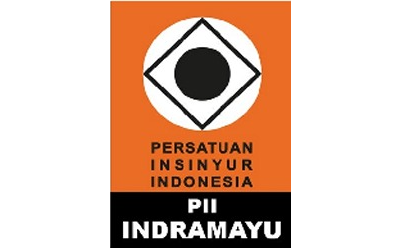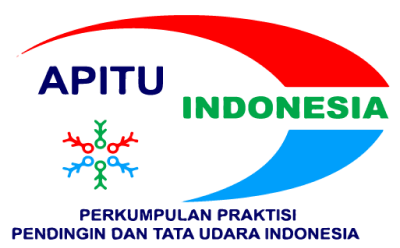Performance and Economic Analysis of Solar Water Pump System Laboratory Scale
Abstract
Full Text:
PDF 12-18References
V. C. Sontake and V. R. Kalamkar, “Solar photovoltaic water pumping system - A comprehensive review,” Renew. Sustain. Energy Rev., vol. 59, no. Supplement C, pp. 1038–1067, 2016.
G. Li, Y. Jin, M. W. Akram, and X. Chen, “Research and current status of the solar photovoltaic water pumping system – A review,” Renew. Sustain. Energy Rev., vol. 79, no. Supplement C, pp. 440–458, 2017.
R. Foster, M. Ghassemi, and A. Cota, “Solar Energy,” in Renewable Energy and The Environment, M. Ghassemi, Ed. CRC Press, 2009.
M. Abu-Aligah, “Design of Photovoltaic Water Pumping System and Compare it with Diesel Powered Pump.,” Jordan J. Mech. Ind. Eng., vol. 5, no. 3, 2011.
A. A. Ghoneim, “Design optimization of photovoltaic powered water pumping systems,” Energy Convers. Manag., vol. 47, no. 11–12, pp. 1449–1463, 2006.
E. Kumolosari, A. A. Setiawan, and K. Suryopratomo, “Evaluasi Komparatif Sistem Suplai Air Bersih Tenaga Listrik dengan Tenaga Surya di Daerah Terpencil (Studi Kasus di Desa Mangunan, Kecamatan Dlingo, Kabupaten Bantul),” Teknofisika, vol. 2, no. 3, pp. 61–68.
M. Benghanem, K. O. Daffallah, S. N. Alamri, and A. A. Joraid, “Effect of pumping head on solar water pumping system,” Energy Convers. Manag., vol. 77, 2014.
A. N. Parawangsa and S. Himran, “Analisis Efisiensi Terbaik Pada Instalasi Panel SuryaDengan Unit Motor-Pompa DC,” in Seminar Nasional Rekayasa Material, Sistem manufaktur dan Energi, 2012, p. III-7-III-11.
Usman, F. Azis, and A. Afandi, “Pengujian Kinerja Sistem Pompa Air Photovoltaic,” in Seminar Nasional Teknik Elektro dan Informatika (SNTEI) 2017, 2017, pp. 1–6.
B. D. Vick and R. N. Clark, “Determining the optimum solar water pumping system for domestic use, livestock watering or irrigation.”
V. C. Sontake and V. R. Kalamkar, “Solar photovoltaic water pumping system - A comprehensive review,” Renew. Sustain. Energy Rev., vol. 59, pp. 1038–1067, Jun. 2016.
R. Parajuli, G. R. Pokharel, and P. A. Østergaard, “A comparison of diesel, biodiesel and solar PV-based water pumping systems in the context of rural Nepal,” Int. J. Sustain. Energy, vol. 33, no. 3, pp. 536–553, 2014.
N. Chandrasekaran and K. Thyagarajah, “Comparative study of photovoltaic pumping system using a DC motor and PMDC motor,” in Advances in Engineering, Science and Management (ICAESM), 2012 International Conference on, 2012, pp. 129–132.
M. Kolhe, J. C. Joshi, and D. P. Kothari, “Performance analysis of a directly coupled photovoltaic water-pumping system,” IEEE Trans. Energy Convers., vol. 19, no. 3, pp. 613–618, 2004.
A. Boutelhig, S. Hanini, and A. Hadj Arab, “Performances’ investigation of different photovoltaic water pumping system configurations for proper matching the optimal location, in desert area,” Energy Convers. Manag., vol. 151, no. Supplement C, pp. 439–456, 2017.
Usman, F. Azis, and A. Afandi, “Pengujian Kinerja Sistem Pompa Air Photovoltaic,” in Seminar Nasional Teknik Elektro dan Informatika (SNTEI) 2017, 2017, pp. 1–6.
C. E. C. Nogueira, J. Bedin, R. K. Niedzialkoski, S. N. M. de Souza, and J. C. M. das Neves, “Performance of monocrystalline and polycrystalline solar panels in a water pumping system in Brazil,” Renew. Sustain. Energy Rev., vol. 51, pp. 1610–1616, Nov. 2015.
S. S. Chandel, M. Nagaraju Naik, and R. Chandel, “Review of solar photovoltaic water pumping system technology for irrigation and community drinking water supplies,” Renew. Sustain. Energy Rev., vol. 49, no. Supplement C, pp. 1084–1099, 2015.
D. H. Muhsen, T. Khatib, and F. Nagi, “A review of photovoltaic water pumping system designing methods, control strategies and field performance,” Renew. Sustain. Energy Rev., vol. 68, no. Part 1, pp. 70–86, 2017.
S. Hamdi, “Mengenal Lama Penyinaran Matahari Sebagai Salah Satu Parameter Klimatologi,” Ber. Dirgant., vol. 15, no. 1, 2014.
TRADING ECONOMICS, “Economic Indicators,” TRADING ECONOMICS, 2018. [Online]. Available: https://tradingeconomics.com/. [Accessed: 02-Feb-2018].
D. J. Friedman, R. L. Mitchell, B. M. Keyes, W. I. Bower, R. King, and J. A. Mazer, “PV Manufacturing R&D Project Status and Accomplishments Under ‘in-Line Diagnostics and Intelligent Processing’ and ‘Yield, Durability and Reliability,’” in 2006 IEEE 4th World Conference on Photovoltaic Energy Conference, 2006, vol. 2, pp. 2502–2505.
Administrator, “Matahari Untuk PLTS di Indonesia,” Kementrian ESDM, 2012. [Online]. Available: http://www3.esdm.go.id/berita/56-artikel/5797-matahari-untuk-plts-di-indonesia-.html?tmpl=component&print=1&page=. [Accessed: 24-Jun-2016].
DOI: https://doi.org/10.31884/jtt.v4i1.96
Refbacks
- There are currently no refbacks.
Copyright (c) 2018 JTT (Jurnal Teknologi Terapan)
 Creative Common Attribution-ShareAlike 4.0 International (CC BY-SA 4.0)
Creative Common Attribution-ShareAlike 4.0 International (CC BY-SA 4.0)














